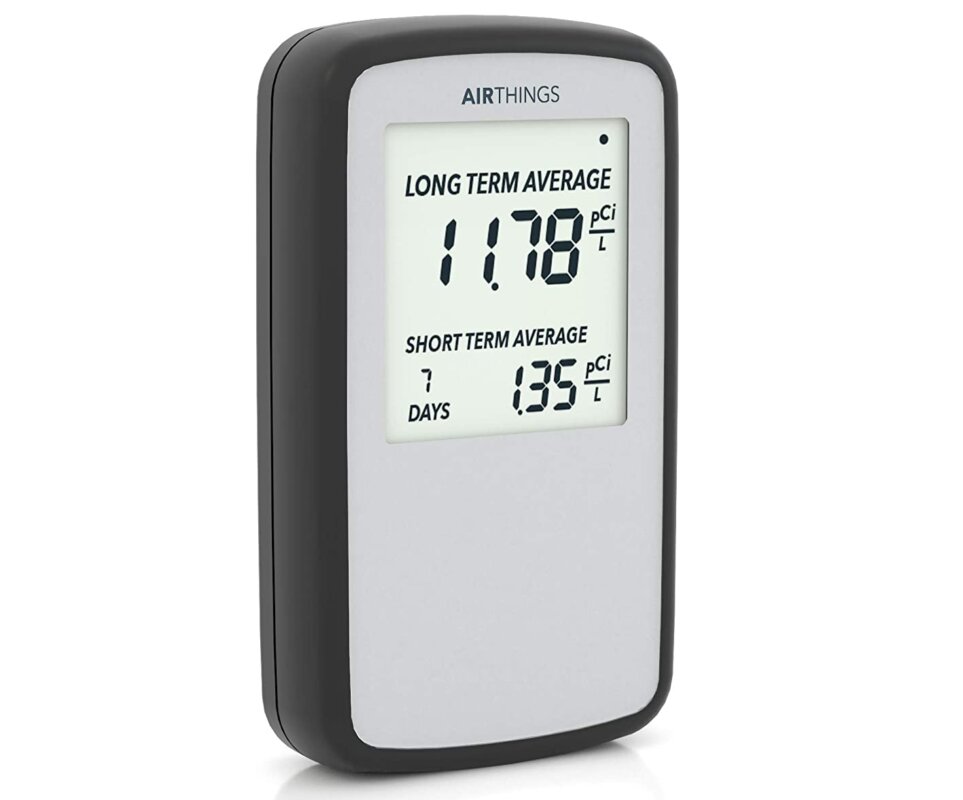The products and services mentioned below were selected independent of sales and advertising. However, Don't Waste Your Money may receive a small commission from the purchase of any products or services through an affiliate link to the retailer's website.
When it comes to staying healthy and attempting to prevent lung cancer, eating right and avoiding smoking are great places to start. But did you know that testing for radon at your house is another important move that can help protect you from this vicious disease?
Radon is a colorless, odorless, radioactive gas that is undetectable by humans. It’s created when uranium or other radioactive materials decay and release from rock formations, soil and specific building materials. Even though we can’t see or smell it, it still affects us negatively. It’s believed to cause more than 21,000 lung cancer deaths per year in the United States and is the second-leading cause of lung cancer, after cigarette smoking.
When we breathe in radon gas, it exposes us to small quantities of radiation. According to the American Cancer Society, this may damage the cells in the lining of the lungs and increase a person’s risk of lung cancer. The risk is higher in those who have lived in a radon-contaminated house for a long period. According to the Environmental Protection Agency, the combination of smoking and regular radon exposure significantly raises someone’s risk for getting lung cancer.
Toxic exposure is found across the country but is most likely to occur in northern, midwestern and southwestern states. This is why testing your home is crucial. According to the EPA, one out of every 15 homes in the United States contains high levels of radon.
Since the health and safety of your family are on the line, you’ll want to test your house using the best radon detector you can find.
How to Find the Best Radon Detector
The only way to know if you’re being exposed to this harmful substance is to run a test. If you purchase a new house, this can be requested during the inspection. Otherwise, you can hire a professional or purchase a radon-testing kit from your local hardware store or online.
The EPA suggests all homes below the third floor be tested, even if they were built to be “radon-resistant.” In short, don’t skip it.
The best radon detector won’t take long to set up and use. Most instructions will require you to leave short-term tests running for a certain number of days and then mail them back to the lab for results. Long-term test kits may give a more accurate assessment of average radon levels over the course of a year; these are left in place for three or more months.
Consumer-level radon detectors can be found easily online and our favorite is the Airthings Corentium Home Radon Detector. It runs on AAA batteries and has a stellar grade of 4.6 stars out of 5 at Amazon from more than 9,000 users. For less than $140 on sale as of this writing, it’s a great deal for having the peace of mind of being able to monitor radon levels anytime.
How To Lower Radon Levels
The good news is that if your home’s levels are reported to be high, you can take action to lower them. The most common method is to install a vent pipe system and fan, which suck radon from beneath the home and vent it outside.
Radon can be lurking in your water supply, though this poses a lower risk than when it comes through the soil. Those with private wells should have them tested for radon to know if water needs to be treated before it enters their home. If your water comes from a public water supply, you can contact your supplier for details.












